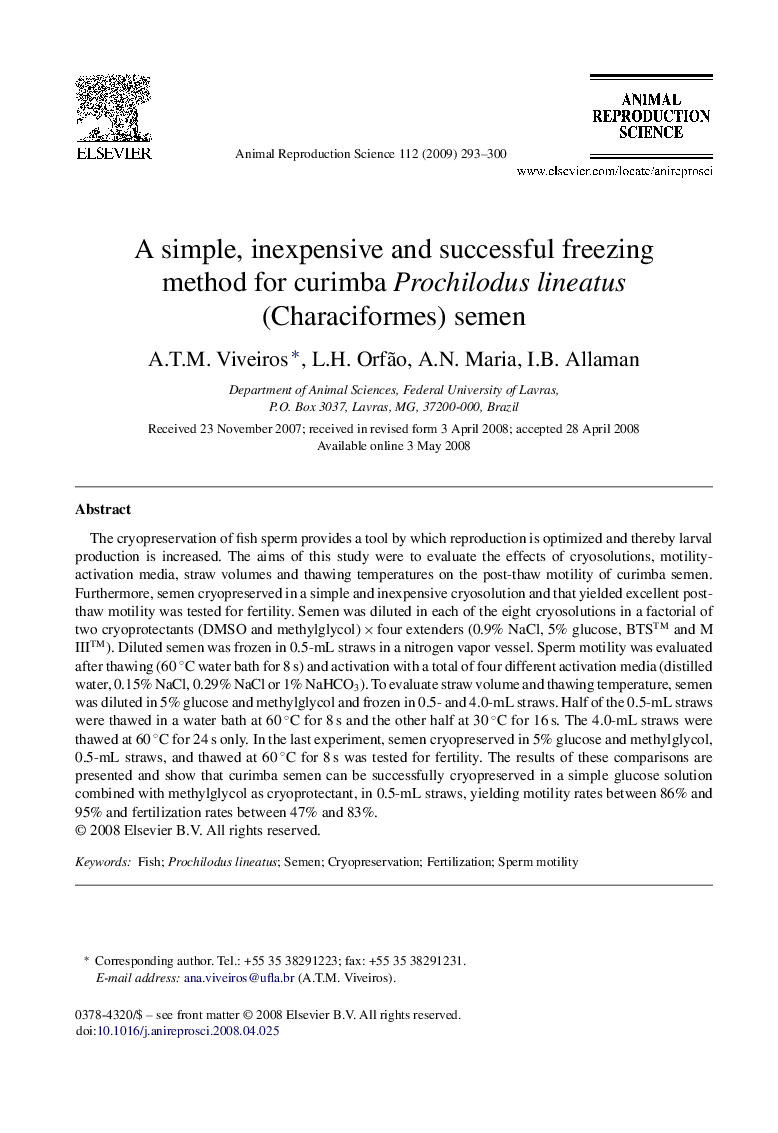| Article ID | Journal | Published Year | Pages | File Type |
|---|---|---|---|---|
| 2074242 | Animal Reproduction Science | 2009 | 8 Pages |
The cryopreservation of fish sperm provides a tool by which reproduction is optimized and thereby larval production is increased. The aims of this study were to evaluate the effects of cryosolutions, motility-activation media, straw volumes and thawing temperatures on the post-thaw motility of curimba semen. Furthermore, semen cryopreserved in a simple and inexpensive cryosolution and that yielded excellent post-thaw motility was tested for fertility. Semen was diluted in each of the eight cryosolutions in a factorial of two cryoprotectants (DMSO and methylglycol) × four extenders (0.9% NaCl, 5% glucose, BTS™ and M III™). Diluted semen was frozen in 0.5-mL straws in a nitrogen vapor vessel. Sperm motility was evaluated after thawing (60 °C water bath for 8 s) and activation with a total of four different activation media (distilled water, 0.15% NaCl, 0.29% NaCl or 1% NaHCO3). To evaluate straw volume and thawing temperature, semen was diluted in 5% glucose and methylglycol and frozen in 0.5- and 4.0-mL straws. Half of the 0.5-mL straws were thawed in a water bath at 60 °C for 8 s and the other half at 30 °C for 16 s. The 4.0-mL straws were thawed at 60 °C for 24 s only. In the last experiment, semen cryopreserved in 5% glucose and methylglycol, 0.5-mL straws, and thawed at 60 °C for 8 s was tested for fertility. The results of these comparisons are presented and show that curimba semen can be successfully cryopreserved in a simple glucose solution combined with methylglycol as cryoprotectant, in 0.5-mL straws, yielding motility rates between 86% and 95% and fertilization rates between 47% and 83%.
